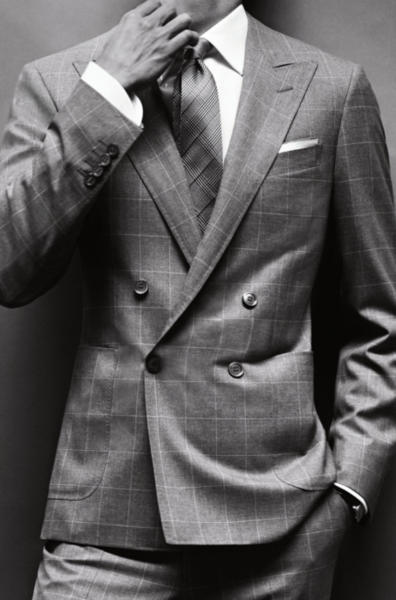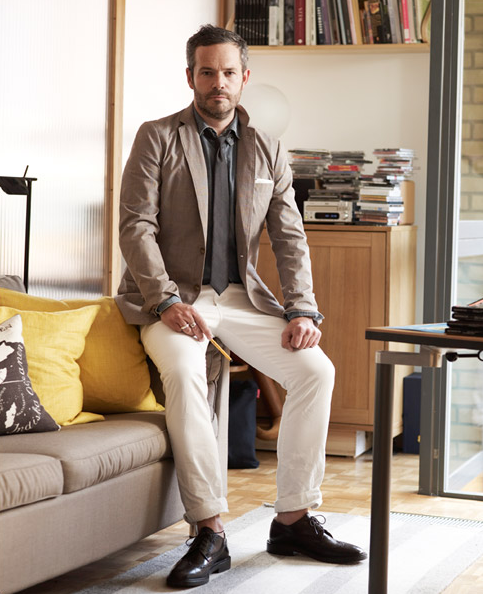 While there has been a clear and appreciable resurgence in the menswear space and of all things sartorial, for some guys, the art of dressing well is still a mystery.
While there has been a clear and appreciable resurgence in the menswear space and of all things sartorial, for some guys, the art of dressing well is still a mystery.
To help you better understand how to dress well and, perhaps more importantly, why dressing well matters, we have assembled this helpful primer. And remember, assembling a well considered wardrobe is a unique blend of task-orientation and personal development. Be patient.
Getting Started
Nothing can affect how others perceive you more than what you wear, and when your clothing does not fit well, it can only make matters worse. Dressing well for your loved one, or at least for the one you like, is only half the battle. To maximize your sartorial impact, ensuring that that your outfit is properly tailored, proportional, and best suited for you, is the real goal.
Whether you wear suit of opt for business casual during your work week, take the time to learn about fit; it’s a very personal thing. In our world of fashion and immediate gratification, dressing your best is an examination in slowing things down and finding out what works for your personal style and your unique physique. With quality clothing, you really do get what you pay for – from fabric to design to construction to tailoring.
The Importance of Fit
When it comes to fit, certain elements matter more than others. For suit coats or blazers, first and foremost this means the shoulders. A correct shoulder is the foundation of a jacket that properly fits and frames its wearer. The shoulder is also one element of the garment that cannot be altered, and anyone who tells you otherwise is not worth your time or money.
Dress shirts should flatter your physique, not envelope it with yards of fabric. The neck should allow for two fingers to slip inside the collar when buttoned, shoulder seams should sit on your shoulders as would your jacket’s, and sleeves should generally end at or just below your wrist bone.
The same approach holds true for trousers; if the fit is wrong, nothing else really matters. Do you prefer them pleated or flat front? Do you like a trim fit or some room around your legs? Are you a fan of cuffs? Do you like a full break or no break at all where the leg’s hem meets your shoe? Regardless, the bottoms of your pants should not puddle around your heels.
It’s also important to learn what styles work with your body type. Do you look best in a silhouette that is fitted and trim or loose and forgiving? Do you need a shorter or longer jacket, two or three buttons, or can you carry off double-breasted? Do you prefer a high fitted European armhole or something less form-fitting? These are questions that are most often answered through trial and error. Go to some different stores, try on different brands and find out what you feel and look best in.
Go Smaller
A particular affliction of the American man is that he often dresses in clothing that is too large. Culturally, many men believe that that they should not feel constricted or tight in their clothing, and that tailored clothing is just that; constricting and uncomfortable. Oftentimes, they are surprised to discover that trimmer and tailored garments feel just as comfortable, simply less slouchy.
You may be surprised to learn that your optimal size is in fact, smaller than you might think. This is an easy way to eliminate billowing jackets, enveloping sweaters, and shirt sleeves ending at the fingertips. If your “regular” shirt always seems too full, try an athletic or slim cut. You can also have a tailor take in the sides of a too-large oxford to reduce bulk; yes, they can do that sort of thing. Sometimes trying on a “short” jacket brings your suit back into proportion.
Going Custom
Another option is to go custom. This can be, depending on your approach, more expensive than even the best fitting off-the-rack garments, but in the long run it can also be a better use of funds. A warning though; once experienced, custom clothing can become a benchmark against which other clothing can never again compete.
Bespoke. At one end of the spectrum is bespoke, in which a suit of clothes is hand constructed specifically for you, from scratch. If done properly, it will likely take several months, require multiple fittings and adjustments, and come with a price tag starting around $3,000. And, depending on your clothier, the cost can easily reach and exceed the $10,000 range.
At this point, of course, money should not be the focus; rather such suits are for those who seek total and individualized sartorial perfection. Since to the observer, you will simply look very well dressed, a true bespoke suit is often the reflection of its wearer’s internal standards rather than his external need for validation.
Made-to-Measure. At the other end of “custom” is made-to-measure, or MTM. MTM is the vast majority of what is generally marketed as “custom” or even “bespoke.” MTM is an excellent option for the man who wants clothing tailored to his particular physique and is willing to step beyond off-the-rack options.
With MTM, certain specific measurements are taken and the foundation of a stock, unfinished, suit in your general size is altered to best match these measurements. This kind of customization allows for rapid turnaround, ease of service, and lower cost. While quality, materials, and construction will vary, MTM suits from reputable online and brick-and-mortar brands can start in the $400 range and go up from there.
In addition, many web-based services such as Proper Suit, Black Lapel, and Indochino offer not only suits, but shirting and other articles of tailored clothing customized to your measurements.
The market for personalized, custom clothing will surely grow as barriers to entry continue to lower, for both customers and the entrepreneurs looking to serve them.
Expand Your Options
It’s also a good idea to review your overall wardrobe for fit, style, relevance, and purpose. While dressing in a suit and tie all week does make for an easier morning, as President Obama recently noted when referring to his self-limited option of choosing between only blue and grey suits, it is still important to make sure you don’t represent decades past. Padded shoulders, low button stances, wide trouser legs or era-specific tie patterns can all work against you.
The same holds true for those who wear business casual to the office, or when you want to look sharp but not corporate. Instead of generic polos and commoditized khakis five days a week, add in some nice tailored pants and dressier casual shirts. Pair with a merino sweater or pick up a variety of sport coats and have them properly tailored. Lose the casual woven leather belt better suited to jeans and invest in a calfskin strap and engraved sterling silver belt buckle.
Making even these simple changes helps to create a more flexible, professional, and personally stylish wardrobe.
An abbreviated version of this article appears in the February 15, 2013, issue of Best Friends at the Bar’s newsletter.

